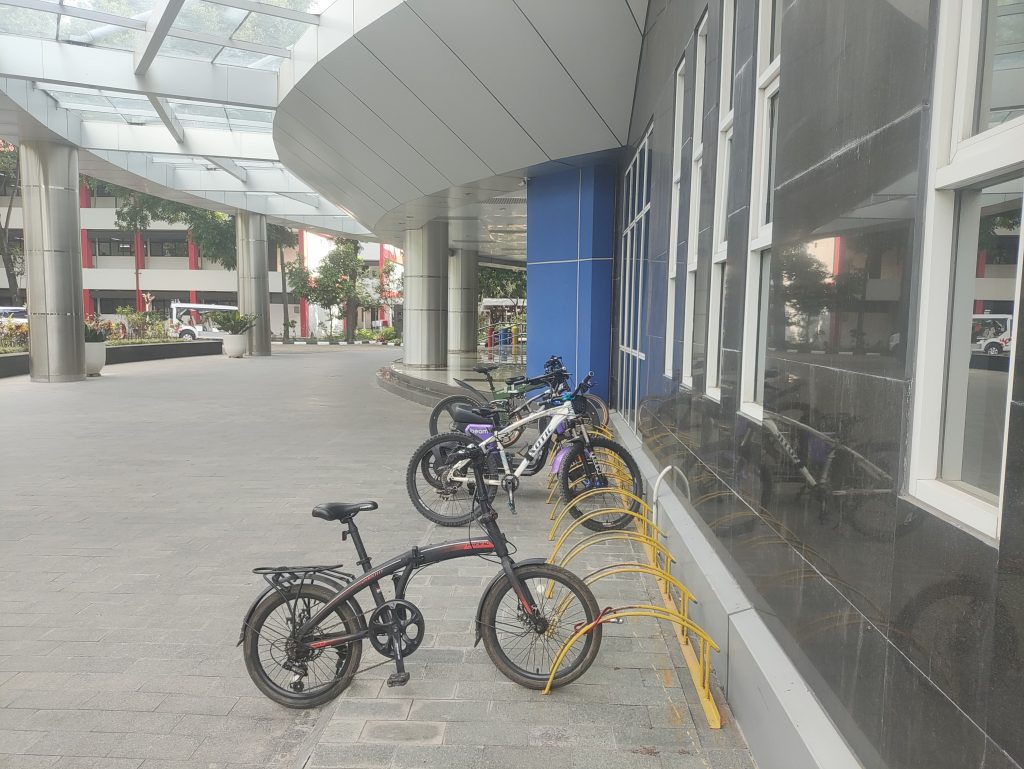
In an effort to realize a cleaner and more sustainable environment, Telkom University is committed to supporting the reduction of carbon emissions through various environmentally friendly initiatives. One of the concrete steps taken is the provision of bicycle parking facilities throughout the campus area. This facility is designed to facilitate students who choose bicycles as their main mode of transportation, as part of the Green Campus concept that continues to be promoted by the university.
Why Bicycles?
Bicycles are an environmentally friendly means of transportation, without carbon emissions, and can help reduce air pollution produced by motor vehicles. Carbon emissions are the release of carbon dioxide (CO₂) gas into the atmosphere resulting from the combustion of fossil fuels such as gasoline and diesel. The use of bicycles as transportation on campus helps reduce the amount of carbon emissions produced by motor vehicles.
What are carbon emissions? Carbon emissions refer to carbon dioxide gas released as a result of human activities, especially from the transportation and industrial sectors. These emissions contribute to climate change and global warming, because carbon dioxide is one of the greenhouse gases that can trap heat in the atmosphere.
Provision of Adequate Bicycle Parking
Telkom University has prepared bicycle parking in several strategic locations on campus, which can be easily accessed by all students and staff. This parking facility is designed to be safe and comfortable, allowing cyclists to store their vehicles without worrying about loss or damage. With the availability of bicycle parking at various points, it is hoped that students will be increasingly encouraged to switch from motorized vehicles to bicycles.
Reducing Carbon Footprint in Campus Environment
The use of bicycles as the main transportation on campus not only helps reduce congestion and air pollution, but also directly reduces the carbon footprint left by motorized vehicles. Currently, the transportation sector is one of the main producers of carbon dioxide emissions, which is the largest contributor to the greenhouse gas category. Simple steps such as encouraging bicycle use can have a significant impact on the environment.
Ways to reduce carbon emissions on campus include:
- Reducing the use of motorized vehicles and switching to bicycles or electric vehicles.
- Raising awareness of the importance of environmentally friendly transportation.
- Developing infrastructure that supports cyclists, such as bicycle lanes and safe parking.
Impact of Carbon Emissions
The impact of carbon emissions on the environment is very significant. Carbon emissions contribute to global warming, which can lead to extreme climate change, melting polar ice, and rising sea levels. The use of fossil fuels by motor vehicles is a major source of carbon dioxide emissions, and initiatives to reduce their use through environmentally friendly transportation such as bicycles are a very important step.
Sustainable Infrastructure Support
The provision of bicycle parking is also part of a broader strategy in creating sustainable campus infrastructure. By combining efficient land use and environmentally friendly transportation facility management, Telkom University continues to strive to create a learning environment that is not only comfortable, but also in line with the principles of sustainability.
Future Direction
The bicycle parking initiative is just one of many steps taken by Telkom University in an effort to achieve a Green Campus. In the future, the university plans to continue to expand other environmentally friendly facilities, such as special bicycle lanes, electric vehicles, and more cool green spaces. These steps are expected to inspire the entire academic community and the wider community to play an active role in preserving the environment.
By supporting the use of bicycles and providing adequate facilities, Telkom University has shown a strong commitment to reducing carbon emissions and improving the quality of life in the campus environment. This initiative is expected to be an example for other campuses in creating a greener and more sustainable learning environment.

Leave a Reply